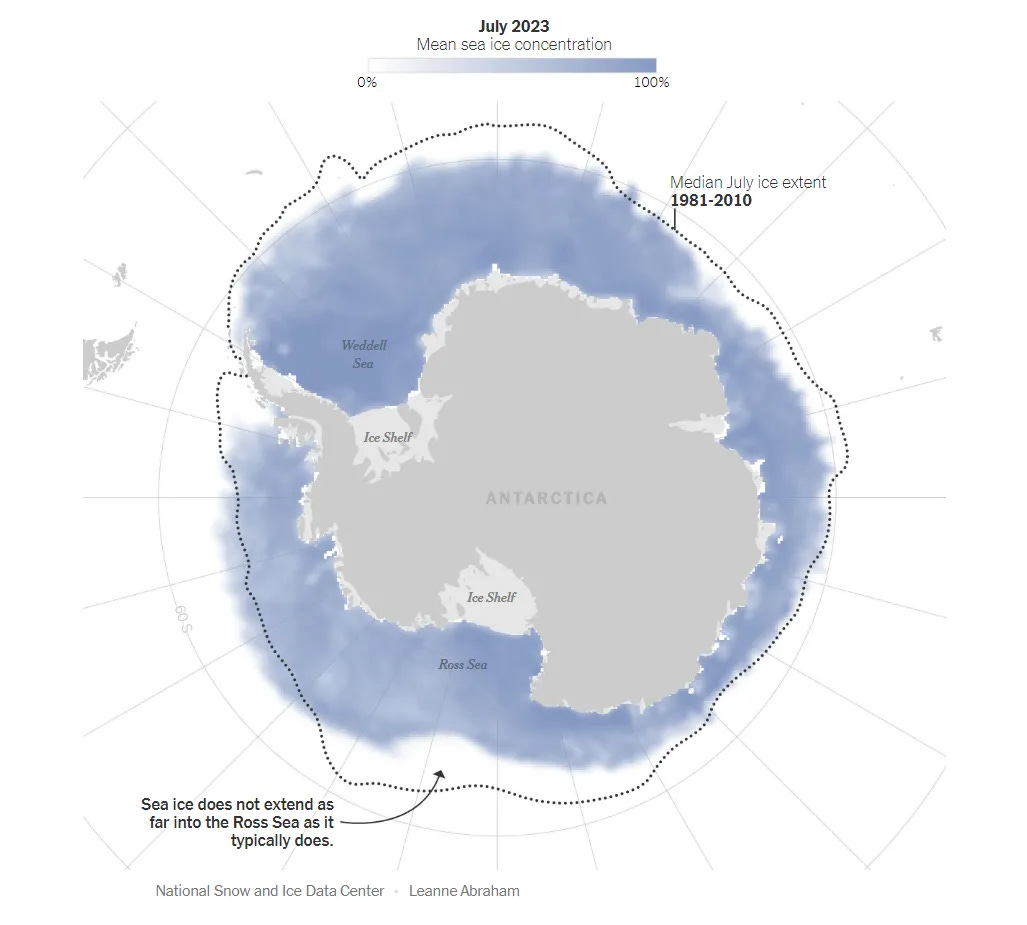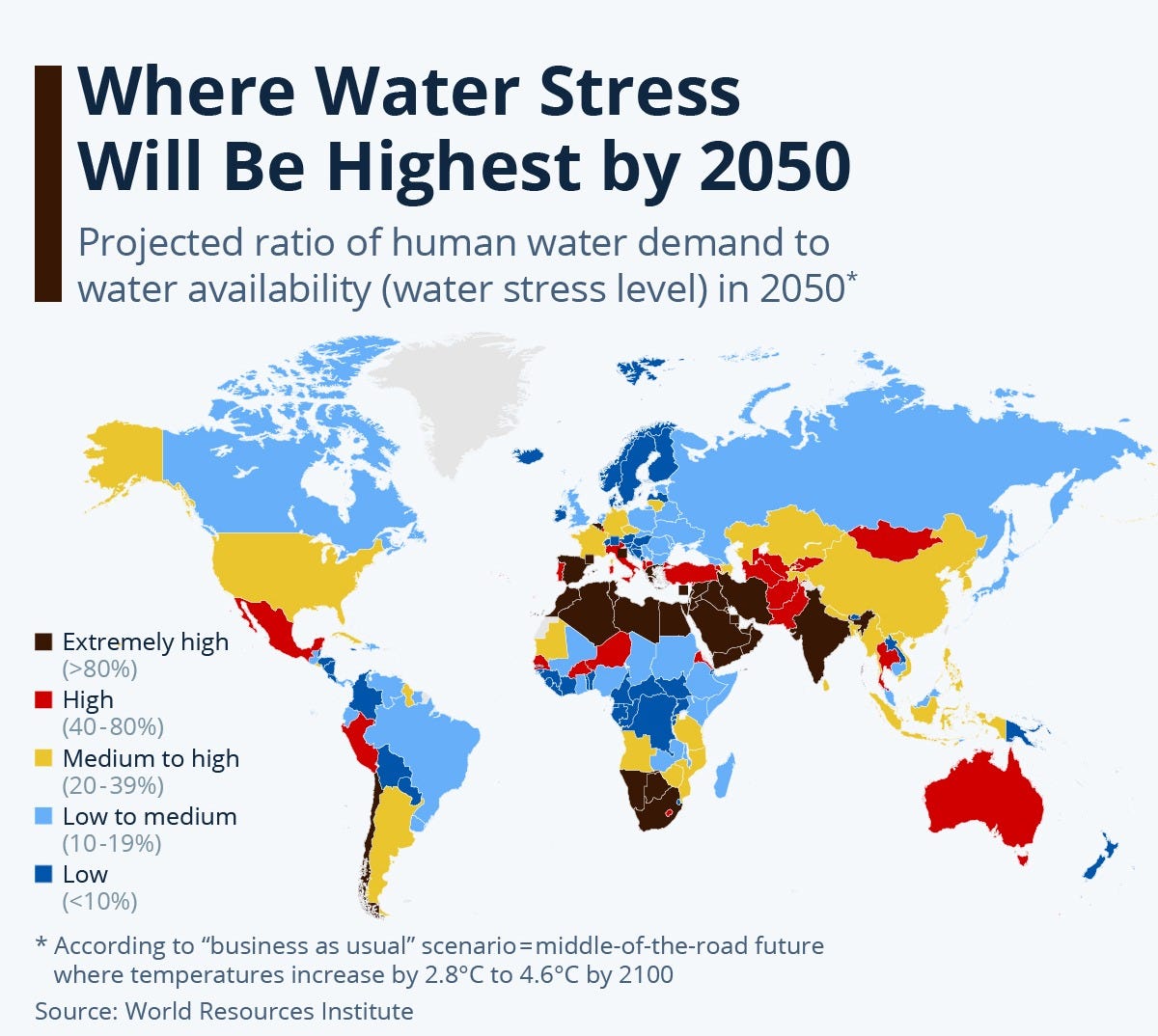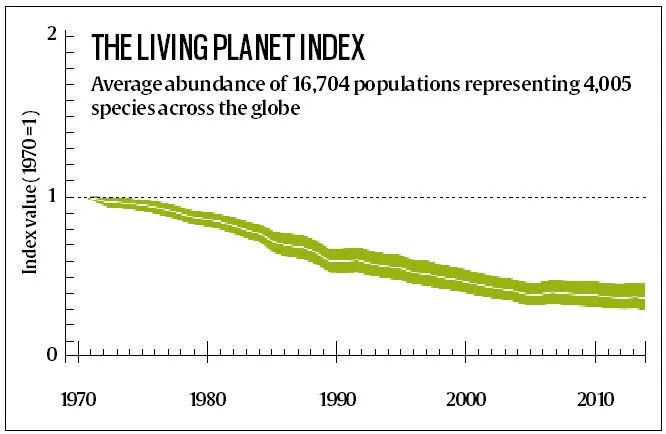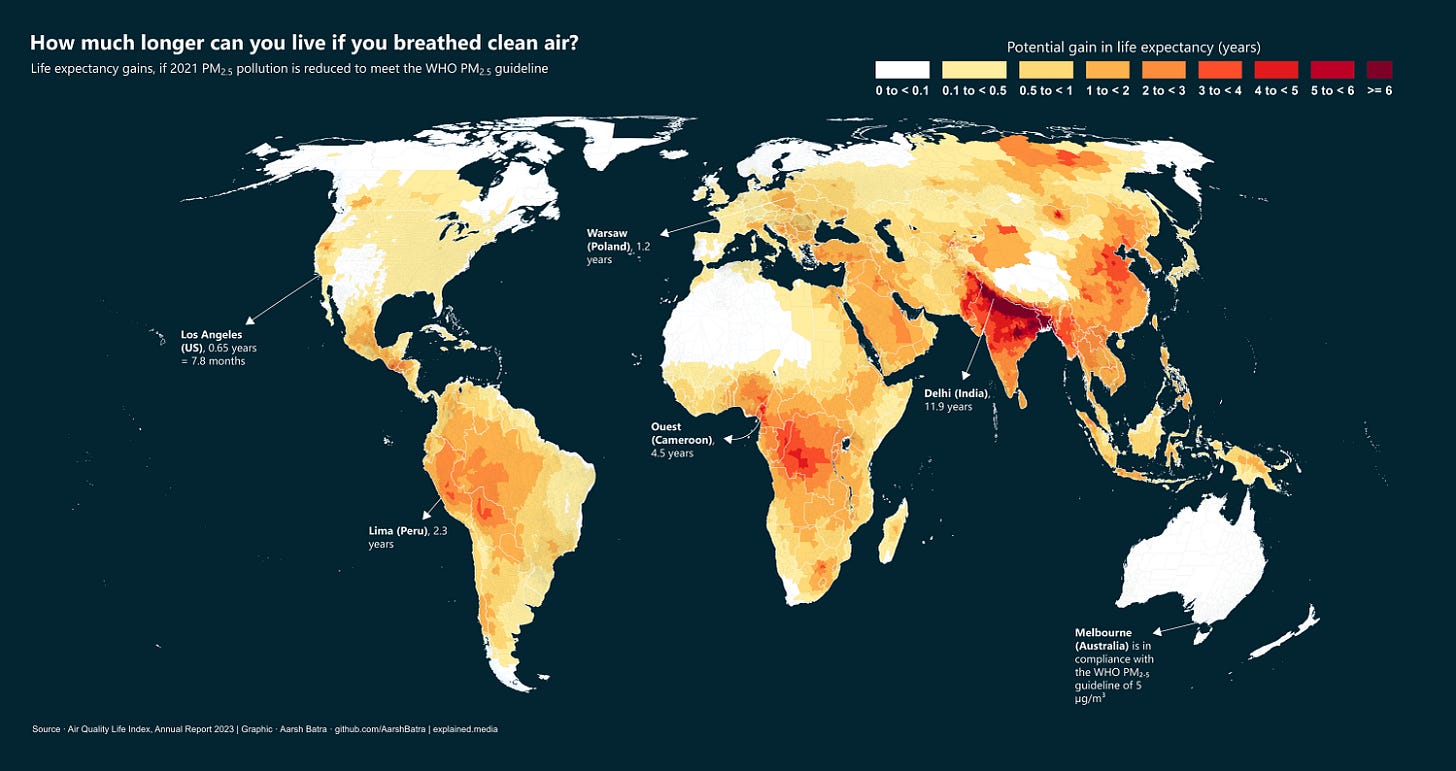Five Graphs You Must See
These graphs will make you look at the world differently. So read, pause and let the numbers sink in.
Welcome to Issue #18 of Thought Shot - a newsletter on becoming better leaders. Subscribe to make sure you don’t miss the next edition.
There are two kinds of people in the world - those who see numbers as just numbers, and those who see them as a secret language that reveals the hidden patterns of our world.
I used to be in the first group. I'd read about climate change or resource depletion and feel a vague sense of unease, but it all felt distant and abstract. But then I started working in the space of sustainability, and data became personal.
I learned how to track and analyze the energy consumption of a building. Suddenly, a small change in a thermostat wasn't just a comfort adjustment; it was a data point that could lead to a massive reduction in the building’s carbon footprint over time. I saw how optimizing a single system could save thousands of dollars and prevent tons of emissions.
This shift from seeing data as something distant to something personal is magic. So, I am sharing 5 graphs that have such hard hitting data that it makes me look at the world around me differently.
I encourage you to look at these graphs, pause and let the numbers sink in.
1. The Ice Crisis

What’s happening in Antarctica is nothing short of a crisis.
This year, the amount of ice around the continent is significantly smaller than usual. It's missing almost half a million square miles of ice - roughly the size of France+UK+ Germany combined or 40% of India’s land.
This sharp drop is alarming scientists. The ice plays a vital role in regulating ocean and air temperatures, circulating ocean water, and maintaining the ecosystem for all kinds of marine life. Everything from microscopic plankton to penguins depends on it. As one expert put it, "This year is really different. It's a very sudden change."
The drop in ice also has a worrying ripple effect. Less ice means less protection from the sun's rays. This raises the water temperature and makes it harder for more ice to form. If this continues, it could expose more of Antarctica's ice sheet to the open ocean, causing it to melt and break off more easily. This melting ice would contribute to rising sea levels, which would have serious consequences for coastal communities around the world.
2. Water Water Everywhere, Not a Drop To Drink

Water, water, everywhere, not a drop to drink - This line from a famous poem might be an actual unfortunate reality for many countries by 2050.
A study by my former organization World Resources Institute shows that 31% of the global population is expected to suffer from high to extremely high water stress by 2050.
If this happens, water stress will impact every part of our life - from electricity to food to survival. And it’s already happening. Between 2017-2021, due to lack of water shortages to cool thermal power plants , there was lost electricity that could have powered 1.5 million Indian households for 5 years. Same tragedy in the food industry. 60% of the world’s irrigated agriculture already faces extremely high water stress. Yet we are expected to feed a projected 10 billion people by 2050.
3. Yes, We Killed Them

The situation for vertebrates - think fish, birds, amphibians, reptiles and mammals - is shocking today. We (humans) have managed to wipe out 60% of vertebrates in the world - thanks to industrialization, deforestation, pollution and more.
Over the last 40+ years, the population of freshwater animals has plummeted by an astonishing 80%. This means meaning for every ten animals that existed in our rivers and lakes in 1970, only two remain today.
Humans are now driving species to extinction at a rate that is 100 to 1,000 times faster than the natural rate.
This crisis isn't just about a few species; it’s about a mass extinction event we are currently living through.
The very lifeblood of our planet's ecosystems is draining away with alarming speed. What will our legacy be—the age when we flourished, or the age when we destroyed the world around us?
4. Women Bear The Load
Think climate change impacts everyone equally? Think again.
A number of studies show that while climate change affects everyone, it impacts women in some very specific and difficult ways.
For example, in many low- and middle-income countries, women are more likely to be killed by extreme weather events than men. This is often because of their lower social and economic status. In the Philippines, women and girls face a higher risk of dying in tropical cyclones. In some parts of Africa, droughts can force men to leave their homes for work, which leaves women with more responsibilities but little to no legal authority. In Bangladesh, one study found that the Sarees (traditional dress for women) could make it harder for women to escape from floodwaters.
The risk isn't limited to specific countries, though. Research also suggests that women in wealthier nations may be more at risk during certain extreme events. This is not due to physical differences, but to existing social roles and expectations. For instance, studies have shown an increase in domestic violence after Hurricane Katrina in the US and after bushfires in Australia. This reveals how climate change is not a neutral force. It exposes and amplifies the existing cracks in our society, particularly for those who are already most vulnerable.
5. You Can Live Longer

Can we actually live longer with cleaner air?
If we met the World Health Organization's air quality guidelines, people around the world could live more than two years longer on average.
In some places, the life expectancy gains are even more dramatic. In Delhi (my hometown) people could live almost 12 years longer if their air was cleaner. In fact, a majority of the cities that would see the biggest benefit from better air are in India and the broader South Asian region.
The reason for this serious problem in places like South Asia is a mix of things, including fast-growing industries and a booming population. But there are also unique local practices, like using solid fuels for cooking and burning agricultural waste, that make the air even worse. Interestingly, there's a strong connection between a country's wealth and its air quality—richer countries tend to have cleaner air. This shows that the air we breathe is not just a scientific problem, but a matter of social and economic fairness.
Thanks for reading this issue of Thought Shot!
If these data points and graphs made you pause even for a second, please share with friends and colleagues.



